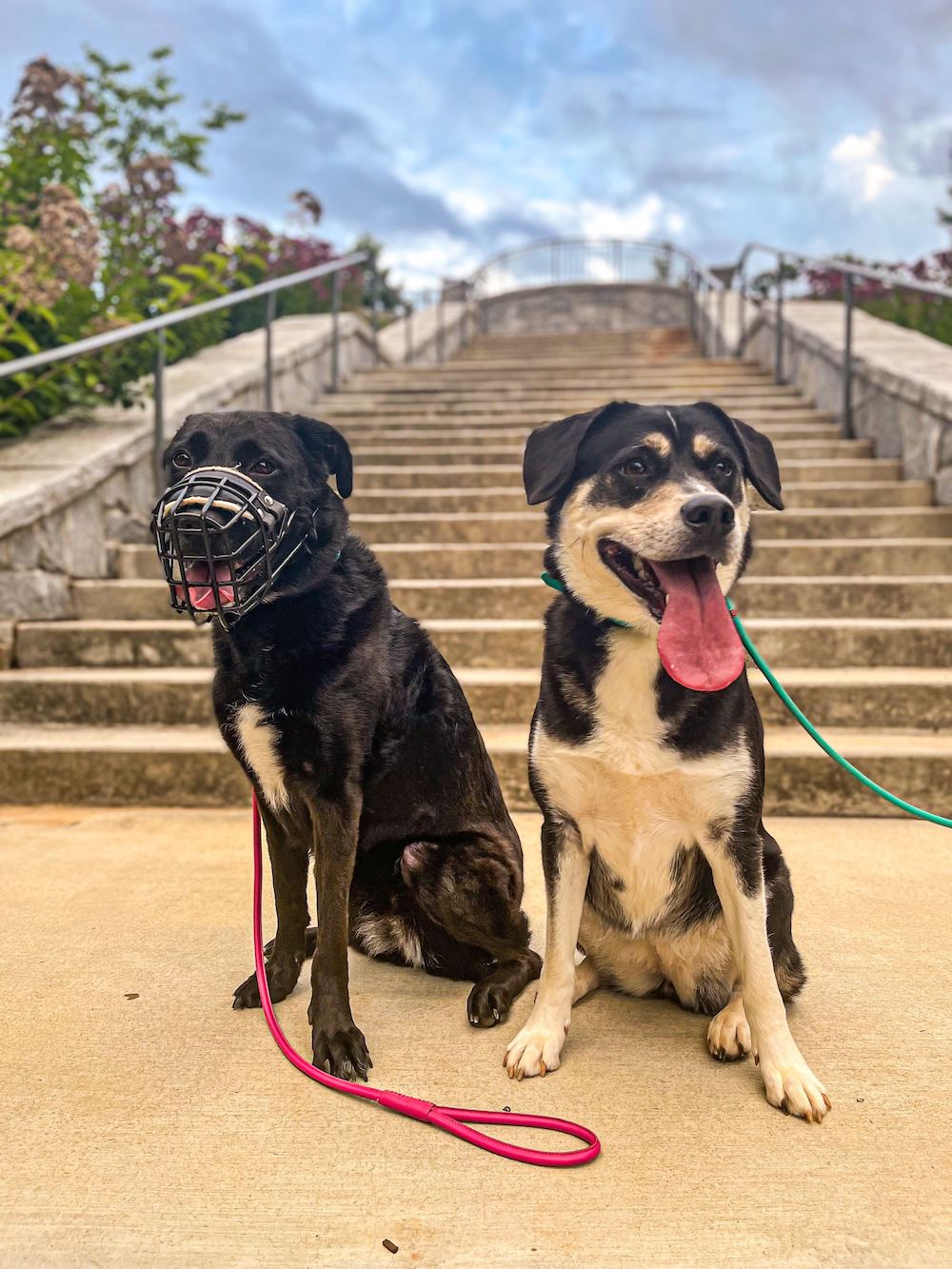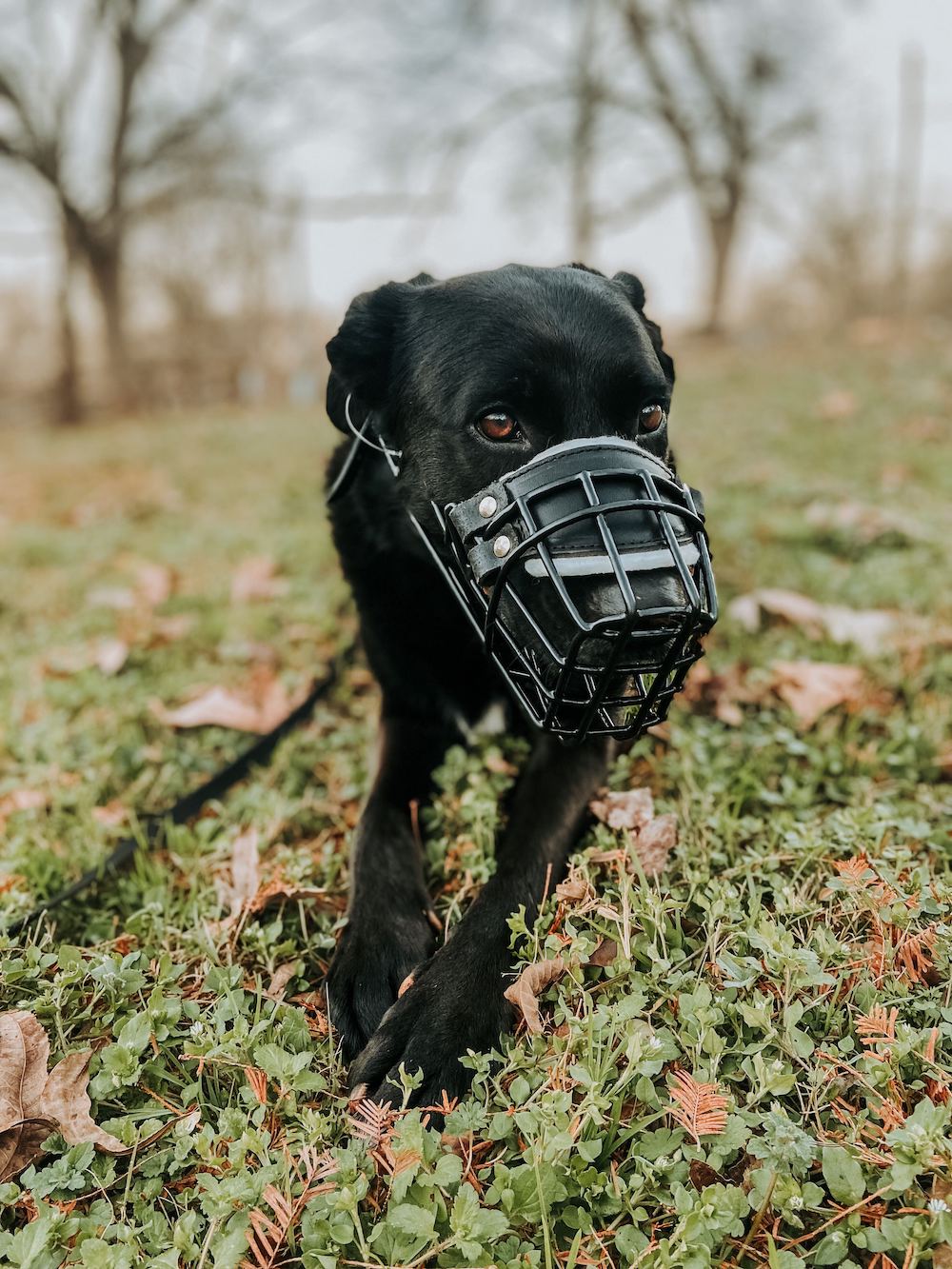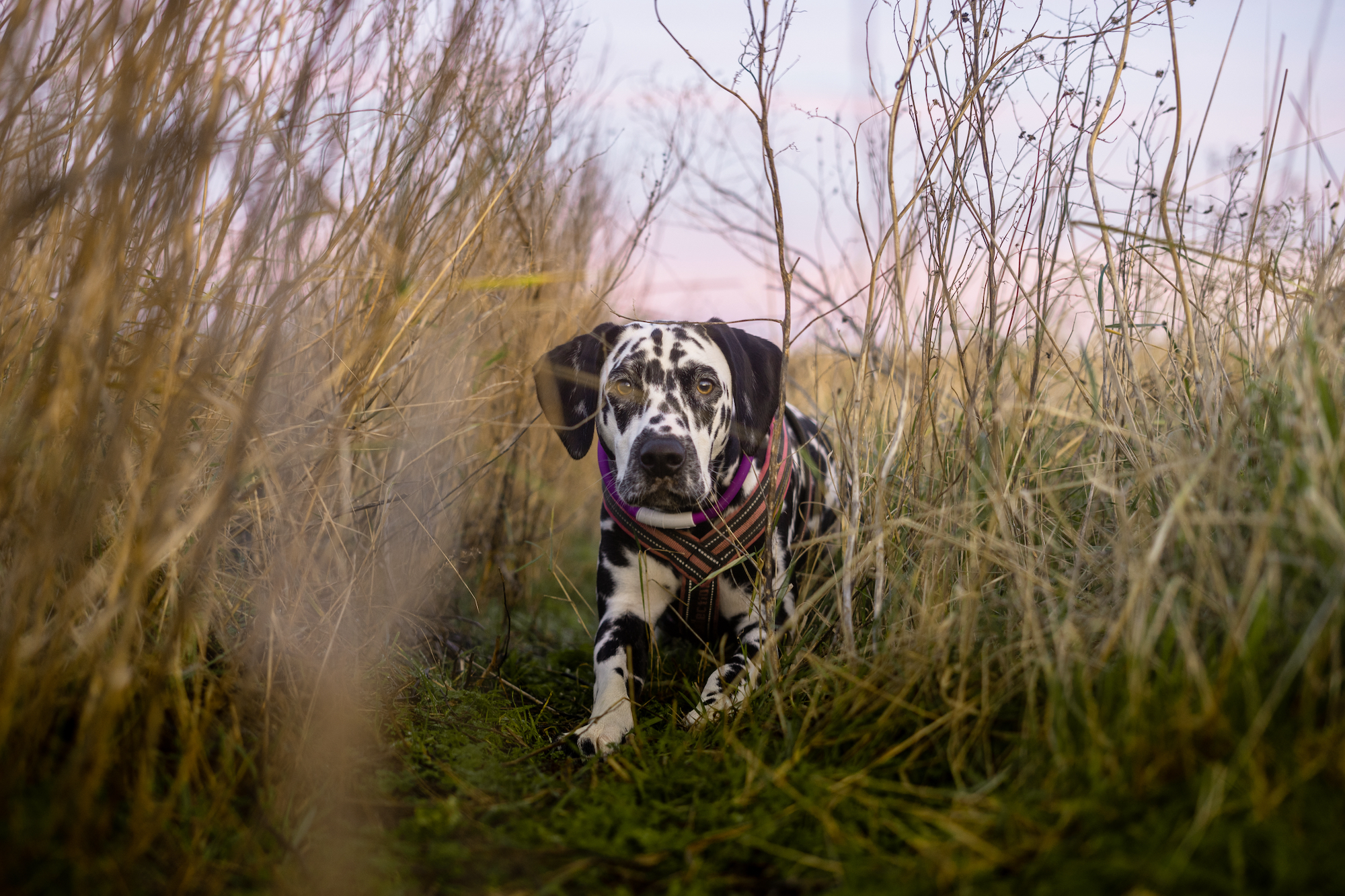Muzzles don’t have the best PR. They look scary to some people. Fastening a covering onto a dog’s mouth might sometimes seem cruel. And the idea of needing a muzzle could feel like a failure to a dog owner—why isn’t the dog trained enough that they can go without one? But while all of these notions are understandable, they aren’t sufficient reason to forego a muzzle if it could help your pup.
Your dog has no way of knowing about any social stigma attached to muzzles. They know whether they’re comfortable or not, whether good or bad things happen to them when they wear muzzles, and how others treat them—and that means that you can help them have a positive experience if they need to put one on.
“I saw tons of dogs in European cities walking through places with muzzles on like it was no big deal,” says Denise Herman, founder and head trainer at Empire of the Dog in New York City. She says that in those cities, where dogs are allowed in many public places, but there are often muzzle requirements, a muzzle is more akin to a collar or a leash—something that dogs get acclimated to early in their lives and don’t mind.

When you might want to use a muzzle
A dog might wear a muzzle:
- To stop them from eating things off of the ground that can’t fit through the cage
- To reduce the risk of them biting a person or another animal
- To safely undergo medical treatment in certain situations
- Because rules or laws require it
Any of these are valid reasons to introduce your dog to a muzzle and use it sometimes.
If someone sees your dog in a muzzle and you think they’re judging you, try not to worry about it. “It’s a sign of owner responsibility more than anything else,” says Herman. She says that using a muzzle in a situation that might call for one is a better approach than telling yourself that “it’s probably okay” because you feel ashamed.

What type of muzzle to use
Soft muzzles, the type groomers sometimes use very briefly while cutting dogs’ hair or nails, restrict dogs’ breathing, panting, and barking, and are not a wise choice if your dog will be wearing one for any length of time. Not being able to pant is dangerous for a dog, as that’s how they cool their bodies down. And if your dog is in a soft muzzle that forces their mouth closed, they won’t be able to eat and you won’t be able to train them with treats.
A properly fitted basket muzzle, on the other hand, will allow your dog to breathe and pant. If your dog can’t do those things, it’s too tight. If they can’t bite or eat things off the ground, but can comfortably breathe and pant while the muzzle stays on, you’ve likely found the right fit.

How to introduce a dog to a muzzle
It’s not advisable to first put a muzzle on your dog at the moment when you need it. If you’re already worried about a situation—the vet, a social encounter, or a place where your dog doesn’t usually hang out—adding the muzzle without adequate preparation could lead to more stress than necessary. It’s best to get your dog comfortable with the tool during calmer times.
“One of the easiest things is to start turning the basket muzzle into a type of Kong,” Herman says of one desensitization method. “Stuff it with some food, freeze it a little bit, and let the dog start eating food out of it so they’re learning how to insert their nose into this confined space and getting something good.”
Go slowly and make sure that your dog is comfortable at all phases of the process, and eventually they should feel comfortable with a muzzle on. Reward your dog for being near the muzzle and tolerating it, and take it off while they’re still in a good mood.
As your dog gets used to the muzzle and you have them wear it, start with fun activities and short periods of time. A walk through a place they like, a game they like to play, a treat they enjoy eating—these can all signal to your pup that the muzzle is something they wear in pleasant circumstances. Gradually increase their length of their time in the muzzle, and don’t push them too far—if your first session lasts a few minutes, and they’re happy throughout, consider that a successful introduction.
Even once your dog has become acclimated to a muzzle, only use it for limited periods when it’s necessary because of rules or safety considerations. Don’t leave your dog muzzled while they’re unattended, or overnight. They could injure themselves trying to get it off, it could get caught on something, and other unforeseen events could cause them harm. And, while a muzzle can keep your dog and others safe in some circumstances, it’s not a replacement for training when it comes to behavioral issues.
The Muzzle Up! Project is an organization that aims to fight the stigma against muzzles and educate the public about their proper use. Their website is a valuable resource for general muzzle information, including tips on training a dog to wear one comfortably.

Common muzzle mistakes
A muzzle can be a useful tool, but it’s not magical. You’ll still have to keep your dog’s feelings in mind and train them to stop any undesirable behaviors that may be part of the reason they need one. It’s a fine idea to put a muzzle on your dog if they’re going to be at the vet and don’t like being handled on their paws or face—but you should use counterconditioning to help them acclimate to that type of handling in the long run, or else you’ll be putting them through a lot of anguish on an ongoing basis.
And if you put a muzzle on your dog when they’re not acclimated to it, then bring them into a situation that’s already challenging, your results may be worse. “If you throw a muzzle on a dog and throw them into the dog park, and he doesn’t want to play with dogs,” says Herman, “it doesn’t mean he doesn’t like dogs—it could mean he doesn’t like muzzles.”

Adding some pizzazz to your muzzle
A muzzle, says Herman, is “just a piece of equipment to the dog,” If you want to make it look more fun or less intimidating, she suggests choosing a fun color like pink. That can send a signal to passersby that you don’t want your dog to seem menacing, and might also add a welcome bit of whimsy to your own experience.
On the other hand, some humans like that strangers are hesitant to approach their muzzled pups—so if you think your dog is better off not meeting too many new people right now, the tool’s reputation could help on that front.
No matter what, remember that you’re doing your best to keep your dog happy and safe—and don’t let it bother you if other people don’t always understand that. Herman says that, when she sees a dog in a muzzle, she tries to give the human positive reinforcement, telling them: “I appreciate that you are doing the responsible thing.”
This article was vetted by a vet.
Reviewed by Alex Schechter, DVM, founding veterinarian at Burrwood Veterinary.




